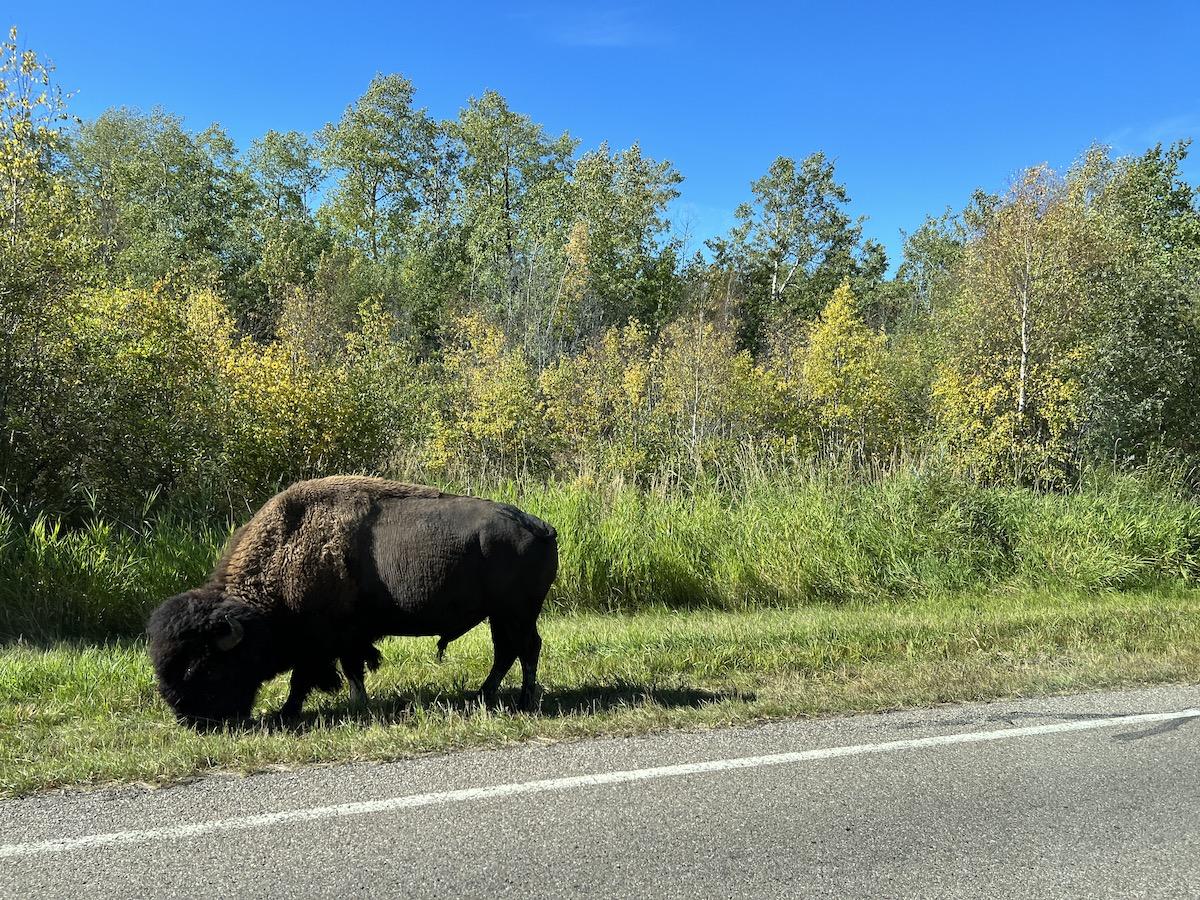
Elk Island is the only fully fenced national park in Canada and it's separated into two areas on either side of a highway/Jennifer Bain
Elk Island National Park lovers have until March 17 to weigh in on the draft management plan that will guide the next decade. They can join a Facebook Live session at 6 p.m. (MST) on Feb. 23, and take an online survey before March 17.
The plan sets out a long-term vision and sets objectives for achieving the vision. It touches on protecting natural and cultural resources, ensuring Indigenous participation in park management, facilitating visitor experiences and working with park neighbors.
Elk Island is 35 kilometers (22 miles) east of Edmonton, Alberta. It is the sixth oldest and, with an area of 194 square kilometres (75 square miles), one of the smallest of Canada’s 47 national parks. Initially created as a wildlife sanctuary for elk in 1906, it became a national park in 1913. In 1943, the preservation of plains bison was designated as a national historic event, recognizing the park’s role in the history of wildlife conservation in Canada.
It’s the only national park in Canada that is completely fenced. The fence helps Elk Island maintain the recognized healthy status of the bison herds, but it is also the cause of many of the park’s ecological challenges such as overabundant bison, elk and moose populations.

In Elk Island's visitor center you can learn about its connection to bison/Jennifer Bain
“The fence functionally splits the park into two blocks that are largely ecologically independent of each other and the surrounding landscape,” the draft plan explains. The larger north block contains the park’s plains bison herd, while the smaller south block contains the wood bison herd. The two blocks are separated by the four-lane Yellowhead Highway. Ungulate populations are isolated within each of the two blocks, and the heavy traffic on the Yellowhead restricts the movement of many other animals.
Elk Island pinpointed five key strategies for the next 10 years:
• Strengthening relationships with Indigenous peoples in the spirit of reconciliation.
• Working towards ecological integrity in the park.
• Working with others in support of ecological sustainability on the broader landscape.
• Creating connections and inspiring people.
• Responding and adapting to climate change.

It's fairly easy to spot plains bison in Elk Island's large north block/Jennifer Bain
The park protects a representative portion of the Southern Boreal Plains and Plateaux natural region and is located on the Beaver Hills plateau, known as Amiskwaciy (Beaver Hills) to Cree peoples.
“The size of park belies its ecological importance,” the plan says. “In a transition area between the grasslands to the south and the boreal forest to the north, the aspen parkland of the Beaver Hills has a unique ecology and supports high levels of biodiversity. Aspen parkland is one of the most endangered ecosystems in the world. Globally, less than 10 percent of the original extent remains intact."
Elk Island is within Treaty 6 territory and the Métis Nation homeland. At least eight Indigenous communities have direct ties to the park lands.
Consultation with Indigenous peoples and the Canadian public is a requirement in the development of national park management plans. An initial phase of consultation occurred in 2021 through to 2022 with park stakeholders and Indigenous partners. This input continues to be considered as the draft plan is being finalized.

 Support Essential Coverage of Essential Places
Support Essential Coverage of Essential Places



